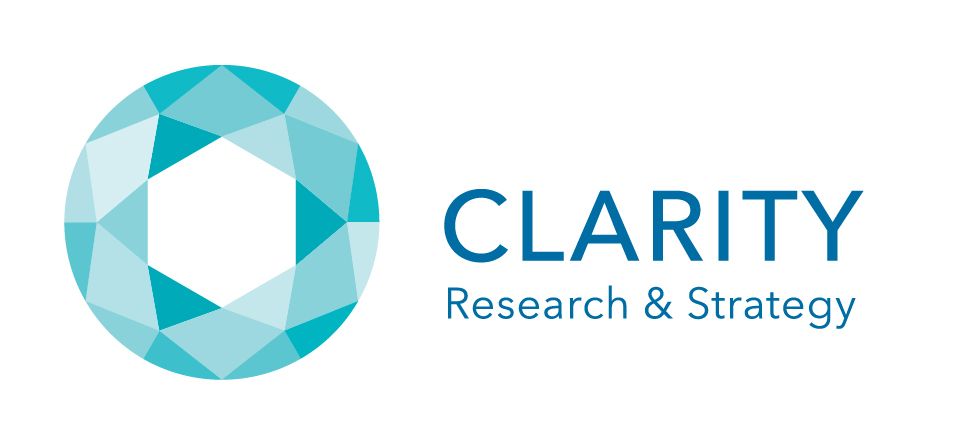One of the most important books I’ve read is Stephen Covey’s 7 Habits of Highly Effective People. In that book Covey introduces the concept of “sharpening the saw.” He describes the practice of renewing oneself regularly to maintain balance and increase effectiveness. By investing time in self-renewal, like exercise, continuous learning, connecting with others, and aligning with personal values, we “sharpen” our ability to handle life’s demands more effectively and sustainably, creating a foundation for personal and professional growth.
Not only can this concept apply to personal development, it can apply to preparing a business to reach greater heights of success. While on the personal level sharpening the saw focuses on mental and physical renewal, on the corporate level it is about issues like staff development, new business effectiveness, and financial preparedness. However, what is often overlooked is the need to sharpen the saw through well structured, impactful research and insight development.
Companies are under constant pressure to innovate, streamline processes, and better understand their markets to stay ahead. This is where research becomes invaluable. Whether it’s market research, product development research, or studying emerging industry trends, research allows companies to make informed decisions that maximize efficiency, drive revenue, and ultimately create significant returns on investment (ROI). Below, we explore how research delivers value and why companies that prioritize it often see strong, measurable returns.
1. Market Research: The Foundation of Strategic Growth
Return: Enhanced Customer Satisfaction and Market Fit
Effective market research is crucial to aligning your products or services with customer needs. By gathering data on your target audience’s preferences, pain points, and buying habits, you can tailor offerings to better serve them. This research reduces guesswork, allowing companies to design products and campaigns that are highly relevant. When products and services meet real market needs, companies are more likely to achieve customer loyalty, repeat business, and positive brand perception, which all contribute to long-term ROI.
Example ROI Outcome: A company investing in market research can see improved customer retention rates, higher lifetime customer value, and lower marketing expenses due to more effective targeting.
2. Product Development Research: Innovating with Purpose
Return: Reduced Development Costs and Higher Product Success Rates
Research-driven product development enables companies to streamline the innovation process by identifying the most promising ideas before they go to market. Through testing, prototyping, and gathering feedback, companies can catch potential issues early, saving costs on redesigns or product failures post-launch. Research can also reveal which features or improvements resonate most with users, ensuring that investments in development are aligned with customer demand.
Example ROI Outcome: Companies that conduct innovation thorough product research often see reduced costs by minimizing product rework and avoiding flops, with the added benefit of faster time-to-market for successful innovations.
3. Competitor Analysis: Finding and Capitalizing on Opportunities
Return: Strategic Advantage and Market Differentiation
Researching competitors allows companies to understand their strengths, weaknesses, and strategies. By identifying gaps in competitors’ offerings or analyzing market positioning, a business can uncover opportunities to differentiate itself or address unmet customer needs. This knowledge informs pricing strategies, product features, and marketing tactics that uniquely position the company, often making it the go-to choice for a specific need or demographic.
Example ROI Outcome: A well-executed competitive analysis can yield increased market share by capturing audiences underserved by competitors, creating new revenue streams and increasing brand loyalty.
4. Customer Insights and Behavioral Research: Personalized Experiences Drive Loyalty
Return: Increased Customer Retention and Higher Lifetime Value
Companies that invest in understanding customer behaviors and preferences are better positioned to create personalized experiences. Behavioral research can reveal which factors influence purchasing decisions, what prompts brand loyalty, and how customers interact with a product or service. These insights can fuel personalized marketing campaigns, improve customer support strategies, and tailor product features, which together enhance the customer experience and drive loyalty.
Example ROI Outcome: Personalization increases customer retention rates, reducing acquisition costs and increasing the lifetime value of each customer, translating directly into more predictable and sustained revenue.
5. Operational Research: Streamlining Processes for Cost Efficiency
Return: Reduced Operating Costs and Greater Resource Efficiency
Operational research focuses on improving a company’s internal processes. By studying workflows, supply chains, and resource allocation, companies can identify inefficiencies and implement cost-saving measures. Operational research can reduce waste, streamline logistics, and improve workforce productivity, all of which have a direct impact on the bottom line.
Example ROI Outcome: Companies that conduct operational research can reduce costs significantly, especially in production-heavy industries, where efficient processes minimize waste and increase output without extra expenditure.
6. Brand Perception and Positioning Research: Building Long-Term Value
Return: Strong Brand Equity and Increased Customer Trust
In an age where consumers are brand-conscious, understanding brand perception is critical. Brand research can reveal what customers truly think of your company and how your brand is positioned against competitors. This enables you to refine messaging, improve public relations strategies, and build campaigns that resonate authentically. A well-regarded brand attracts new customers, retains existing ones, and can often command higher prices, directly impacting profitability.
Example ROI Outcome: Strong brand equity can lead to increased revenue, as customers are more likely to choose and remain loyal to brands they trust and respect.
Maximizing Research ROI with Strategic Implementation
For research to create a true return on investment, it must be actionable. Companies need to not only gather insights but also implement them effectively. Here are some best practices for maximizing ROI from research:
- Prioritize Research Areas: Focus on research that aligns with your business’s strategic goals and market opportunities.
- Use Data-Driven Decision Making: Encourage a culture of data-driven decisions to turn research findings into actionable strategies.
- Invest in Quality Data: Quality research requires quality data; invest in reliable sources and methodologies to avoid misinterpretations.
- Evaluate and Iterate: Research is not a one-time investment. Continually assess and adjust strategies based on updated data and evolving markets.
Research as a High-Value Investment for Sustainable Growth
Research is an investment, not an expense. It empowers companies with data-driven insights, enabling them to serve customers better, innovate effectively, and operate efficiently. Companies that prioritize research create a cycle of knowledge and improvement that translates into measurable ROI, giving them a competitive edge and positioning them for long-term growth. In short, research offers a direct path to strategic, sustainable returns, and it’s an investment every growth-oriented company should prioritize.
Let’s end with a story that has been attributed to Abraham Lincoln.
In a small village nestled within a dense forest, a woodcutting competition was announced. The prize was a hefty sum of gold, and every able-bodied man in the village decided to participate. Among them was a quiet, unassuming man named Elias, known for his meticulous nature, which often made him seem slower than the others.
Elias spent the morning in his small shed, painstakingly sharpening his axe. He took his time, honing the blade to a razor-sharp edge, carefully checking the angle with each stroke. His neighbors, seeing him work so slowly, chuckled and muttered about his wasted time while they just grabbed their axes and began swinging.
As the day progressed, something remarkable happened. With each swing of his perfectly sharpened axe, Elias effortlessly cut through the thickest trunks, while the other men struggled with their dull blades. By midday, Elias had already felled a large number of trees, while the others were just halfway through their first.
As the sun began to set, the crowd gathered to see the results. To everyone’s astonishment, Elias was declared the winner, he simply smiled and explained, “A sharp axe does not just cut wood; it saves time and energy. It is not about how quickly you swing, but about the quality of the swing.”
The moral of the story is clear. Spending time preparing to succeed is not an expense, it’s an investment. Research is perhaps the most critical element for creating a “sharp” organization that experiences true return on investment.
Want to Learn More About Business Alignment?
- Let’s talk about the Business Value of Research and Return on the Investment: Contact Us
- Read our Amazon bestseller Three Wise Monkeys: How Creating a Culture of Clarity Creates Transformative Success





